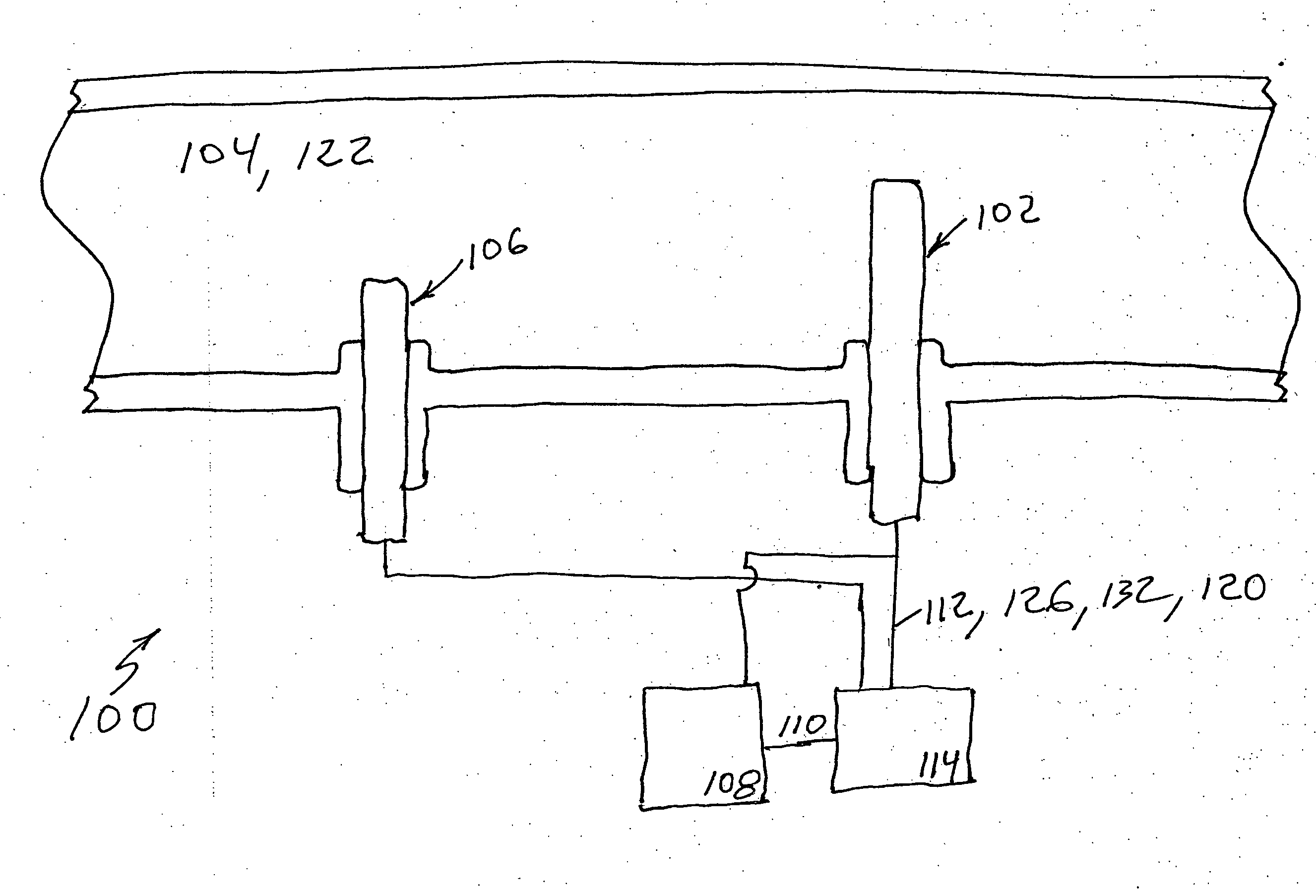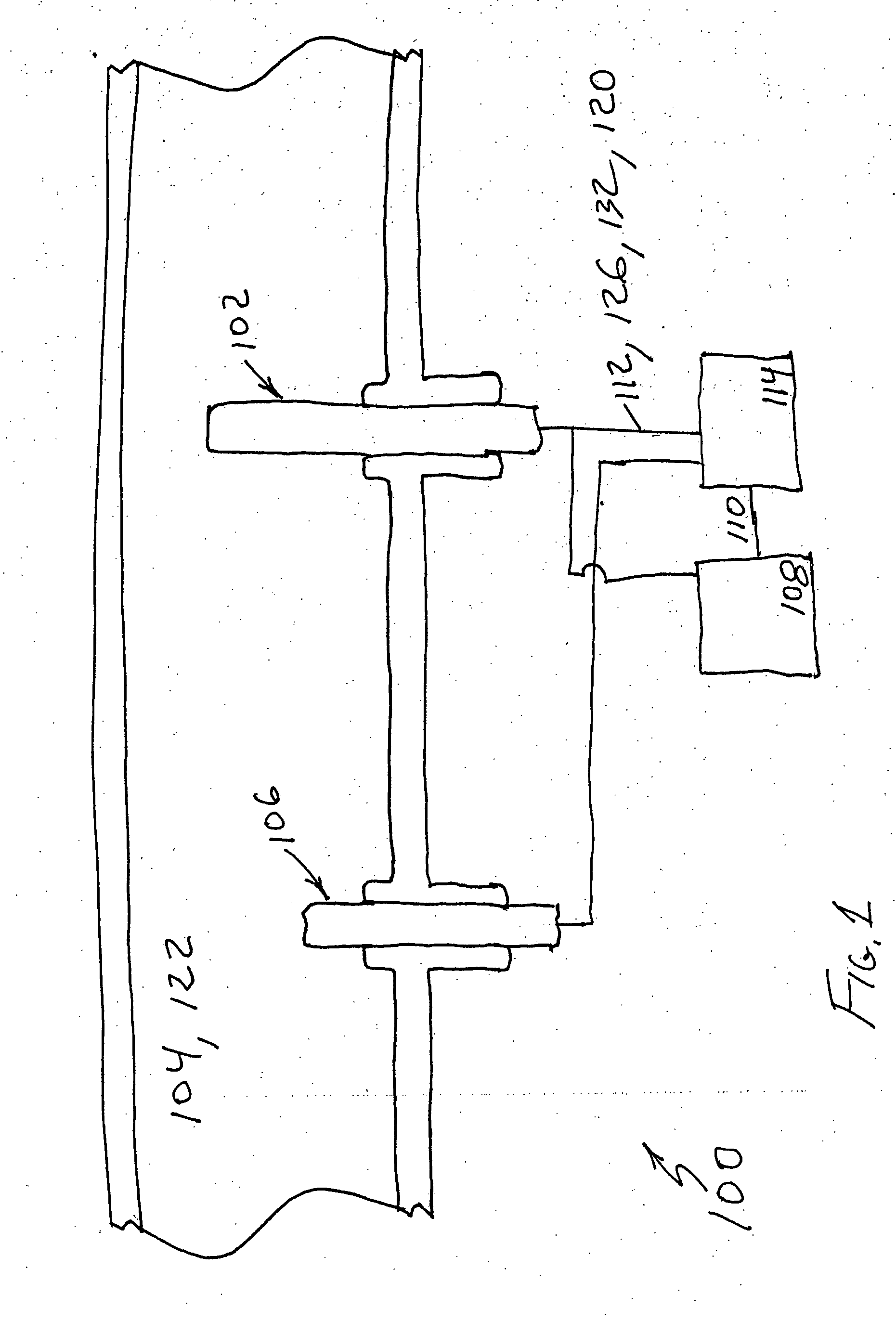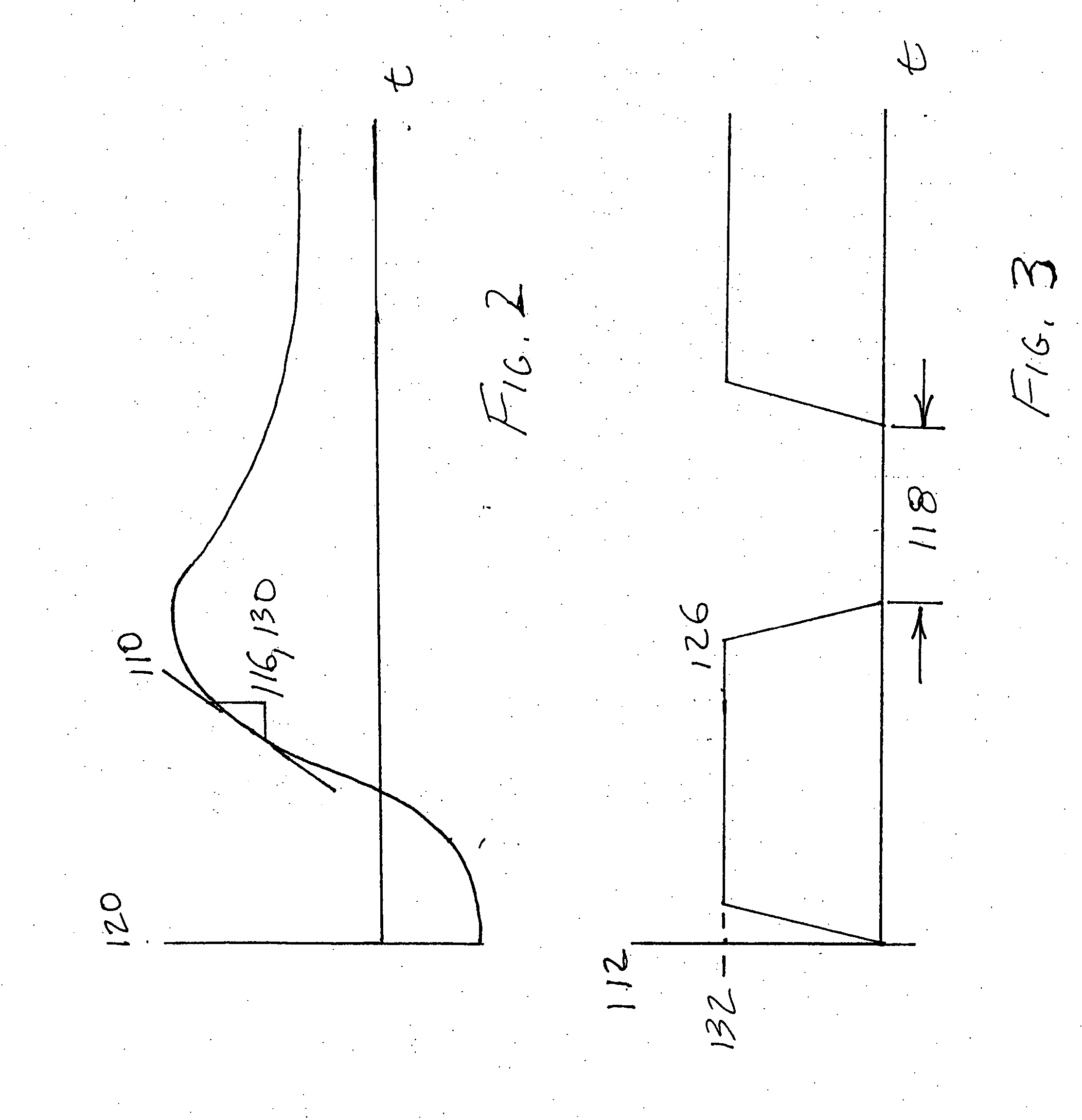Mass-flow sensor heating element protection method and apparatus
- Summary
- Abstract
- Description
- Claims
- Application Information
AI Technical Summary
Benefits of technology
Problems solved by technology
Method used
Image
Examples
first embodiment
[0026] In FIG. 1 is shown a heating element protection apparatus for a mass-flow sensor 100 according to the invention. Mass-flow sensor 100 may include a heating element 102 disposed in a gas 104. A heating element controller 114 may supply power 112 to heating element 102 to replace heat dissipated by convection, conduction, or radiation to gas 104.
[0027] Since a rate of mass flow of gas 104 is proportional primarily to heat dissipated by convection, heating element controller 114 may assess the difference between a temperature 120 of heating element 102 and the gas temperature to compensate for the heat dissipated by conduction and radiation. In one embodiment, a gas temperature sensor 106 may be disposed in gas 104 to sense temperature 122 of gas 104. In this embodiment heating element controller 114 may detect temperature 120 of heating element 102 and may supply power 112 to heating element 102 based on heating element temperature 120 and gas temperature 122. In another embodi...
second embodiment
[0033] In the invention a method of protecting a heating element 100 for a mass-flow sensor 100 may include the steps of disposing a heating element 102 in a gas 104, detecting a temperature 120 of heating element 102, disposing a gas temperature sensor 106 in gas 104, sensing a temperature 122 of gas 104, supplying power 112 to heating element 102 to replace heat dissipated by gas 104 based on heating element temperature 120 and gas temperature 122, measuring a slope 110 of power 112 with a slope detector 108 as it is supplied to heating element 102, and switching off power 112 for a predetermined period of time 118 if a magnitude of slope 110 may be greater than a reference magnitude 124. In one embodiment, the method of protecting a heating element 100 for a mass-flow sensor 100 may further include the step of restarting an open loop ramp up.
PUM
 Login to View More
Login to View More Abstract
Description
Claims
Application Information
 Login to View More
Login to View More - R&D
- Intellectual Property
- Life Sciences
- Materials
- Tech Scout
- Unparalleled Data Quality
- Higher Quality Content
- 60% Fewer Hallucinations
Browse by: Latest US Patents, China's latest patents, Technical Efficacy Thesaurus, Application Domain, Technology Topic, Popular Technical Reports.
© 2025 PatSnap. All rights reserved.Legal|Privacy policy|Modern Slavery Act Transparency Statement|Sitemap|About US| Contact US: help@patsnap.com



